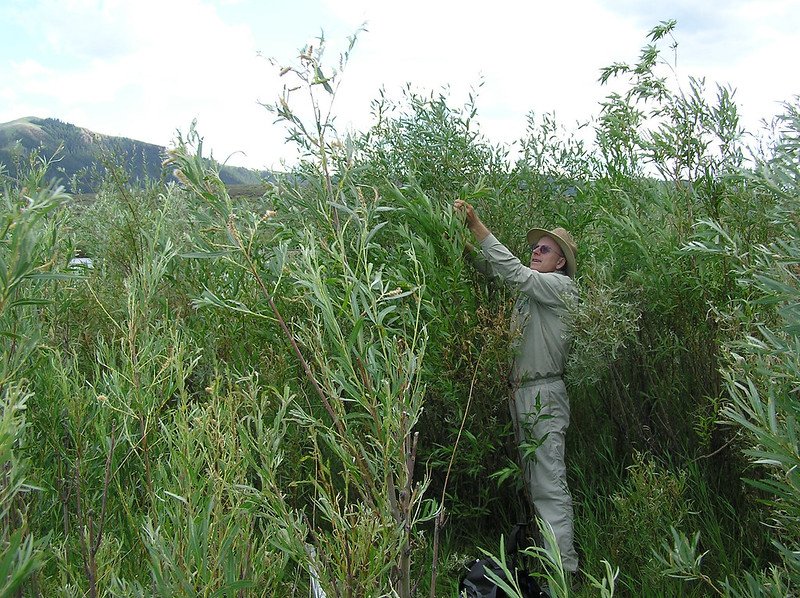‘Radical incrementalism’: OSU-scientists outline bold solution to climate change, biodiversity loss, social injustice

CORVALLIS, Ore. – An international team of scientists led by Oregon State University researchers has used a novel 500-year dataset to frame a “restorative” pathway through which humanity can avoid the worst ecological and social outcomes of climate change.
In addition to charting a possible new course for society, the researchers say their “paradigm shifting” plan can support climate modeling and discussion by providing a set of actions that strongly emphasize social and economic justice as well as environmental sustainability.
Oregon State’s William Ripple, former OSU postdoctoral researcher Christopher Wolf and collaborators argue their scenario should be included in climate models along with the five “shared socioeconomic pathways,” or SSPs, that are used by the U.N.’s Intergovernmental Panel on Climate Change.
“We understand that our proposed scenario may be a major challenge to implement given current trends in emissions, a lack of political will and widespread social denial, but its merits can’t even be honestly debated if it’s not included in the suite of options,” said Ripple, distinguished professor of ecology in the OSU College of Forestry and the Richardson Chair in Forest Science.
“We’re arguing for radical incrementalism: achieving massive change through small, short-term steps. And we’re offering a much-needed contrast to many other climate scenarios, which may be more aligned with the status quo, which isn’t working.”
Ripple and co-authors from the United States, the Netherlands and Australia present their restorative pathway in a paper published today in Environmental Research Letters. They say the pathway is inspired by a unique compilation of Earth system variables that vividly illustrate how humanity’s resource demands have exploded since 1850, indicating ecological overshoot.
“The supporting data underscore the urgent need for action,” said Wolf, now a scientist with Corvallis-based Terrestrial Ecosystems Research Associates. “The growth in human population, gross domestic product and energy consumption, primarily reliant on fossil fuels, has led to an extraordinary surge in greenhouse gas emissions, dramatically altering land use and triggering a massive biodiversity decline.”
The authors note that current climate change modeling relies on multiple assumptions and factors related to policy options and societal developments. An international team of climate scientists, economists and energy systems modelers developed the SSPs, which are used to derive greenhouse gas emissions scenarios under different sets of policies that assume continued and significant GDP growth through 2100.
“The SSPs describe plausible developments that in the future would lead to different challenges for climate change mitigation and adaptation,” Wolf said. “They’re based on five narratives that describe alternative socioeconomic developments, some more sustainable than others. Our scenario focuses on reducing the consumption of primary resources to a level that keeps environmental pressures within planetary boundaries, with per capita GDP stabilizing over time.”
Wolf, Ripple and collaborators took a long-term look back at a range of variables: fossil fuel emissions, human population, GDP, land use, greenhouse gas concentrations, global temperature, vertebrate wildlife species abundance, income inequality and meat production.
Collectively, the data paint a comprehensive picture of the profound changes Earth has undergone, say the authors, who include Jillian Gregg of Terrestrial Ecosystems Research Associates, Detlef P. van Vuuren with the Netherlands Environmental Assessment Agency and Manfred Lenzen of the University of Sydney.
“The income share variable extends back to 1820 and shows how the top 10% have consistently received at least 50% of all income, illustrating global economic inequality over the long term,” Ripple said. “The restorative pathway would represent a more equitable and resilient world with a focus on nature preservation as a natural climate solution; societal well-being and quality of life; equality and high levels of education for girls and women, resulting in low fertility rates and higher standards of living; and a rapid transition toward renewable energy.”
Unlike some of the current shared socioeconomic pathways, the restorative pathway does not rely on the development of carbon capture technologies, nor does it assume continued economic growth as the SSPs do.
“By prioritizing large-scale societal change, our proposed pathway could limit warming much more effectively than pathways that support rising resource consumption by wealthy nations,” Ripple said. “We aim to bend the curves on a wide range of planetary vital signs with a holistic vision for addressing climate change, biodiversity loss and socioeconomic injustice. Our work presents a case for how humanity can embark on the journey of saving the world from these environmental and social crises.”
In October 2023, Ripple, Wolf and 10 other U.S. and global scientists published research in BioScience that showed the Earth’s vital signs have worsened beyond anything humans have yet seen, to the point that life on the planet is imperiled.
Ripple is also the co-author of another BioScience paper, published Tuesday, that examines climate change and the related biodiversity crisis from a cosmic perspective using “long-term planetary thinking,” he said.